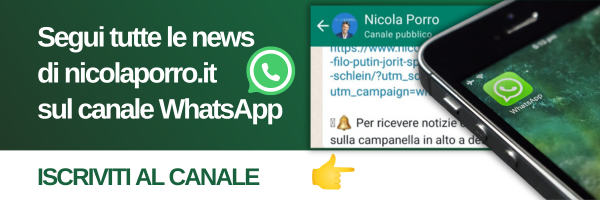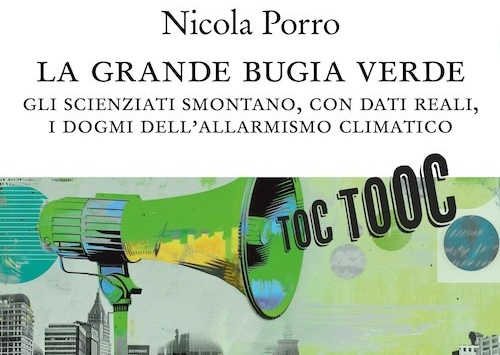By Alessandro Varrenti, partner and head of international operations, Tonucci & Partners. JD, University of Rome. LL.M Columbia University. Professor of public finance and corporate tax, UNICH University
A hard-hitting analysis and a suggestion: a US-Italy Special Purpose Vehicle to give cash to Italian companies and workers to survive the pandemic crisis, so that Italy can get rid of the Chinese embrace and of the calls for draconian conditions by northern members of the EU
We’ve spent over eight weeks in the lockdown craze reading books and making technological efforts to connect via all kinds of new apps for video meetings or conference calls hoping to keep work alive. We have also spent time watching TV and videos on social media. Most glutted by talk shows and marathon debates with politicians and opinion makers (Italians’ favorite job) reeling off slogans about the need to inject money in the system, yet without suggesting one single credible solution. Dire warnings like “or else…”, “ the risk is that…” “we’re on the verge of disaster…” and so on have been routinely thrown into the discussion by all those interviewed. With all due respect, as one should say to be politically correct, these lines are the standard jargon of those who should know better but fail to realize how far we already are down the tubes. All talk and no action, despite the dramatic need to act immediately.
Let’s face it, there is no “risk” about going bust but an absolute certainty that we will if we do not do something now to pull ourselves out of trouble. Cash right away for people and companies in lockdown is good to say but a hard promise to keep. Especially if one does not explain how it’s done. Any request to the EU for money leveraging on the usual chord of solidarity is dead on arrival and a waste of time. Some member states are not foolish in saying that since Italy has one of the largest public debts on the planet and but with also the largest private savings (twice as much) we’d better look for money in our own country. As crude as this accusation can be, the facts lay bare how true this is and that there are no serious arguments to rebut it, except a beggar’s prayer and charlatan’s plea for help. Besides, even assuming for argument’s sake that we could talk the EU hardliners into providing liquidity through institutional channels, any cash so obtained would be nothing if not debt; and to use a corporate metaphor, piling up debts is the ideal path to bankruptcy for any quasi insolvent company.
The issues are many, let us sum them up: 1. The immediate need for cash. 2. The UE [EU] and the impossibility to get the ECB to act and print helicopter money or act as a “lender of last resort” like a real central bank could (and actually should act) in such dramatic circumstances. 3. The downside in the creation of additional debt for an overly indebted country like Italy. 4. The Italian banking system.
Let’s start with the last one first. At the risk of sounding superficial, though it can hardly be denied, Italian banks have been in big trouble for so long following the Lehman crisis that with very few exceptions getting a “liquidity loan” has become the equivalent of winning an Oscar, and seeking a corporate credit facility is like searching for the Holy Grail. The plain truth is that the wicked Basel banking arrangements have been crafted by out of touch politicians who thought that banks and the economy are and operate the same way in Portugal, Italy and Germany, while the strictures they have introduced over time have crushed lending in weaker countries, especially Italy. Now, despite the absence of “extra” money available for bank lending and in total contempt of reality, under the recent remedies introduced by the government to face the pandemic Italian banks should be lending money out of their own deposits – even if repayment is backed by a State guarantee – to people and companies to whom they would have never lent a single penny under normal circumstances. A good political move, but an impossible remedy to put into practice, especially given the current situation.
Italian banks are no easy lenders, that’s quite true; but not by their fault, as compliance with the Basel parameters they are bound to is too difficult to follow. So, what can be done in absence of the money from the EU? Some have recently claimed that a wealth tax could do the job. It is indeed an old slogan of the leftist parties but even they are afraid to sponsor its introduction, as everyone knows that it is the perfect boomerang that would bounce back politically against whoever dares go down that road. Apart from philosophical considerations, the main argument against a wealth tax is that banks and insurance companies in which people’s savings have been placed will bleed incurably in its aftermath, as people will likely rush to withdraw their money and liquidate investments. Since this cure is worse than the disease, we must think of alternatives.
As ever, history is the most reliable source of inspiration to elaborate proposals. The past teaches us the future, historians say. Let’s see what history and the facts tell us.
A. Italy’s economic recovery following World War II was not due to the relatively good governments in power in the 50’s and the 60’s. The boom came from investments by multinational companies, mostly American, in the wake of the Marshall plan.
B. Italy is a key member of NATO and its geographic location makes it the most important country in the Mediterranean.
C. Money can only be drawn from where money is already found, and not necessarily on debt.
D. Money is not only held by the “Cassa Depositi e Prestiti” (“CDP”, the Italian equivalent of the French Caisse de Dépots and the German KfW), which by the way is not a bottomless pit and cannot be the sole source of cash every time there is trouble around. What other money is available, then? A staggering amount of cash lies in pension funds, social security funds and other institutional investors, not to mention private equity funds (many of which are waiting on super-hot deals once the market hits rock bottom, and it won’t take long before that happens). Setting aside the latter, the total value of investment portfolios managed by pension and social security funds is currently in the range of 250 billion Euros and the pension funds alone account for about 25% of this amount, i.e. roughly 60 billion. Of this latter amount existing regulations allow for a quarter to be invested in the so called “real economy”. Many have discussed this possibility, but it’s all been talk and no action.
Let’s assume that through the usual suspect CDP, in this case acting as a pure anchor investor and not as an evergreen lifeline, an ad hoc SPV [Special Purpose Vehicle] is created and money is then poured in by pension funds and the other institutional investors in the maximum amount they can invest. We could be looking at an initial amount of funding (and cash available as a result) in the range of 50 to 100 billion, with a target in the higher end. That’s about three times as much as the amount that the EU could make available through the ESM (European Stability Mechanism), which the right parties are fiercely opposing these days. Plus, it would not be State debt nor “classic” debt for those who draw money. Let’s also assume that the Italian State still provides the guarantee for the repayment of loans or other advances made by the SPV, as in the case of the actually imaginary bank loans. But, more importantly, let us assume that we look to the US and not to the EU as our best friend to seek additional support, both in terms of additional investments and to provide backup guarantees if needed. Some said in the last few weeks that we should seek help of this type from China. Others said that Russia would be the right “partner”. Whereas any such exotic choices could hardly be acceptable for the EU (and even less so for NATO) the most logical and historically correct “partnership” should be one with the US. When it comes to business and investments, English is the language and America is the country. If this could be the case, the question is then: how would the SPV work and what could the US do that the UE does not and cannot?
- The answer to the first question is, in two ways: (i) by paying upfront invoices that have been accepted by the final debtor and by granting in parallel a reasonable length of time to that debtor to pay the amount invoiced, while the Italian State guarantees its repayment to the SPV; and, (ii) by underwriting bonds issued by all sorts of mid caps and smaller companies that are also backed by the Italian State guarantee as to their redemption at maturity. This would produce the same end result as any coveted (but pipe dream) State guaranteed bank loans, except in a completely different way while not creating additional debt, as in the case of advances on the invoices. To fine tune this solution some or all of these bonds should be convertible at some point, whether into real equity (minority interests only) or in other (hybrid) securities that generate a minimum annual yield for the initial bondholder.
- The answer to the second question is intrinsically of political nature, but that’s where history comes into play. The US is the only country that has really helped Italy following World War II, and along the lines of some similar but reasonable efforts could exercise some good moral suasion upon its own institutional investors to fund the SPV and could also consider the possibility to provide its own State back up guarantee to comfort any American investments so made.
The last question, near and dear to any investor is: where can any of them make money on this project? Let’s see. The SPV should act like any other securitization vehicle, and issue commercial paper just like any other SPV would following the purchase of portfolios of non-performing loans (NPLs) or UTPs (unlikely to pay) as certain other bad debt is called these days. With one big difference, though: the underlying assets owned by this SPV would not be bad debts or actual “junk” as it is mostly the case in securitization projects but basically asset backed securities enjoying a State (or multiple state) guarantee. It would of course be for the markets to test the soundness and grade of these instruments. But while no one can reasonably make any prediction in this respect, I would venture to say that on principle, since the money of the underwriters would be protected by State guarantees, this could prove as a much better investment than buying into other standard securitization vehicles.
This is not the right forum to illustrate in detail the dozen technical implications and the legal features of these instruments, which surely need to be analyzed further and be structured along with a good investment bank, but the message is hopefully clear. Inaccessible bank lending can turn out to be a real blessing if we play our cards right, and if we choose the right partner.



